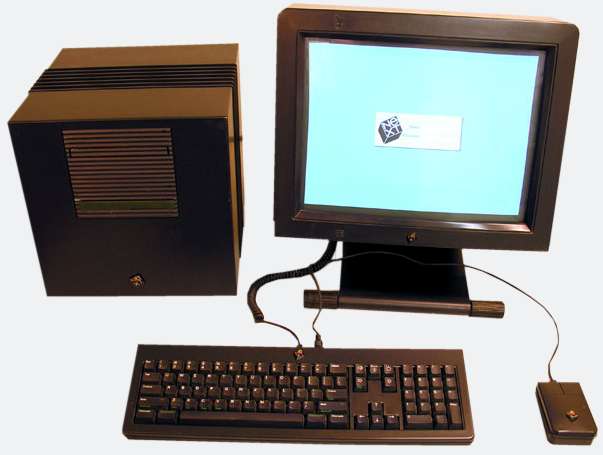
One of the forerunners of our modern computers was one thought up by Steve Jobs. It was called the “NeXT” computer. It was given the nickname “Cube” after it came into being back in October of 1988. It came with an impressive base price tag of $6500.00 and an equally impressive appearance. It was designed in an all black enclosure. It ran a new form of operating system that was based on object-oriented programming. It was so high priced that not much of the general public had the money to get one and it ended up being mainly used by universities. The NeXT Computer was followed in 1990 by the NeXT Cube and NeXT Station.
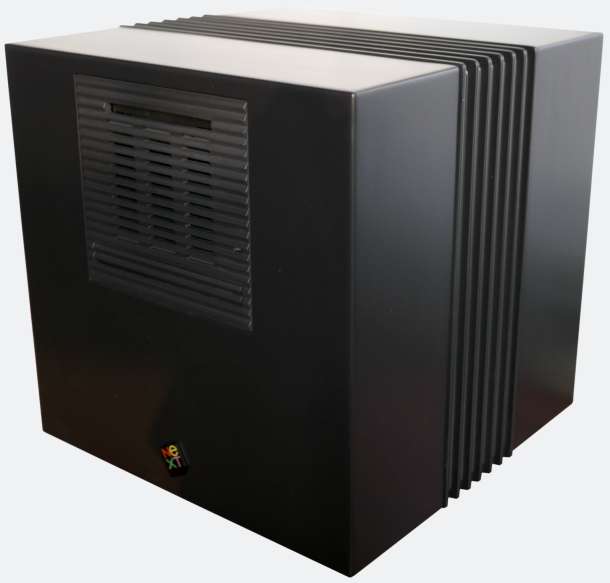
The NeXT computer was designed with a futuristic look but might be called antiquated by today’s standards. The jet black externals of the computer were set up just as the name implies. It was a twelve inch black magnesium cubicle with vent holes for the heat to escape. This is where it gets its “Cube” nickname from. The accompanying monitor was decked out with the matching all-black aesthetics, but it was not a color monitor.
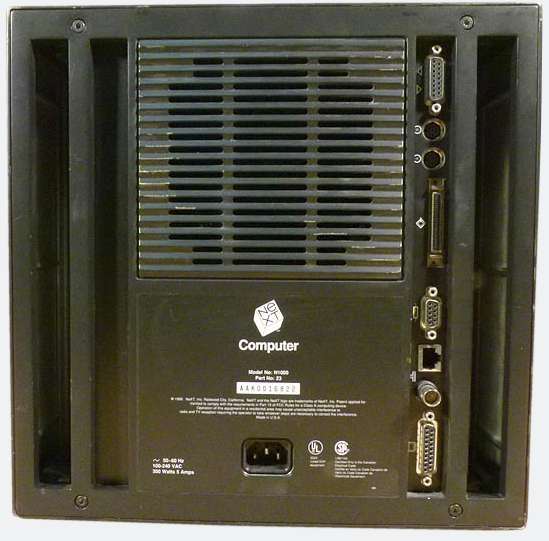
The original seventeen inch display was only a grayscale unit with 1120 by 832 pixels of resolution. It could only show four shades of gray but came with its own speakers built in to its enclosure. Later models would come with “NeXTdimension” and color displays. The keyboard continued the “Darth Vader” scheme with the all-black color. If ordered, a 400 dot per inch laser printer could be bought to complete the purchase.
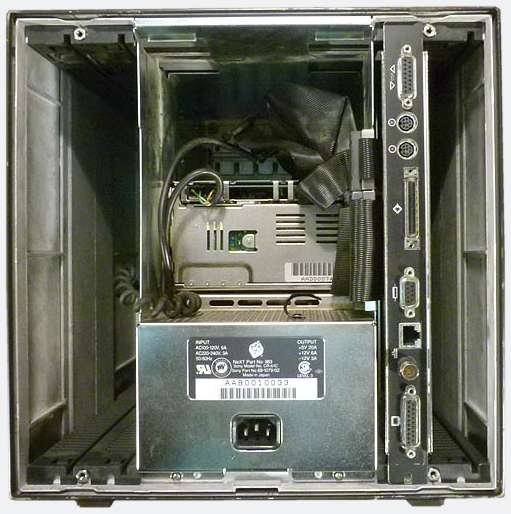
On the inside of this high-end workstation were some modern specifications for the time. The hard drive was set up as a magneto-optical drive. It was sized at 400 megabytes and was different from many hard drives of the time thanks to its construction. If the buyer wanted to change over to something more traditional, and faster, a different drive could be bought later. Larger hard drives in sizes of 1.4 gigabytes or 2.8 gigabytes were options for more storage space. The 68040 central processing unit ( CPU ) was humming along at 25 megahertz. This would later be bumped up to a 33 megahertz “Turbo” model later. For those who really wanted all-out speed, there was another accelerator board known as the “Nitro”. They were very rare and only five to twenty of them are rumored to have been made. It raised the processing speed up to a “blinding” 40 megahertz. The random access memory ( RAM ) was rated for 16 megabytes and could be upgraded to 64 megabytes. A floppy drive was not included, but could be ordered as an accessory by the user.
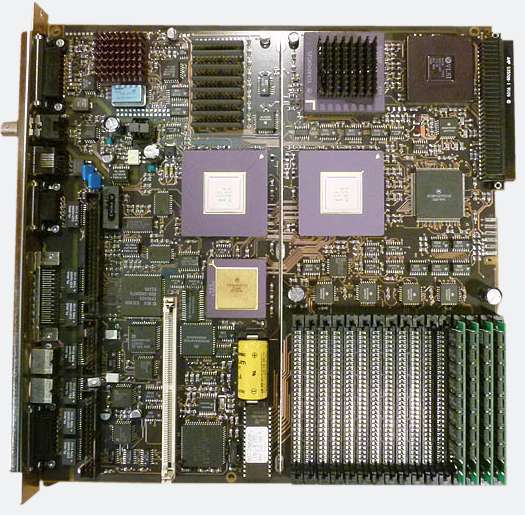
The software was of course made by the team under Steve Jobs. Jobs had created the operating system called “NeXTSTEP”, and this computer was one of the original machines to run it. It was a modern piece of programming with the ability to multi-task and was based on “Object Oriented Programming” similar to the Java programming language, which would be created a few years later, in 1991. The NeXTSTEP was based on the Bell Labs creation, Unix, which is still being used today. An interesting note is that the Cube was ready before the NeXTSTEP operating system was ready.
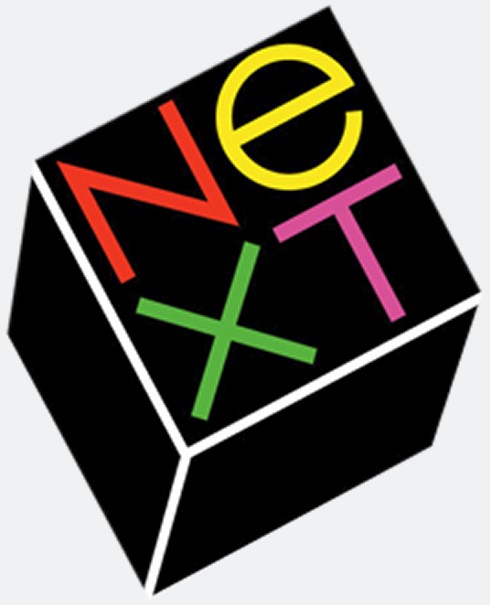
It took six months after the Cube was available for Steve Jobs and his company to finish the NeXTSTEP software. The graphics were handled by software called “Postscript” with the added ability to print out the graphics on a laser printer. Apple eventually bought NeXT just to get their hands on the NeXTStep OS which later was used as the foundation for MAC OS X and later iOS. The NeXT computer also has its place in computing history because Tim Berners-Lee created the first web server software on it. It was also used to write the first web browser.
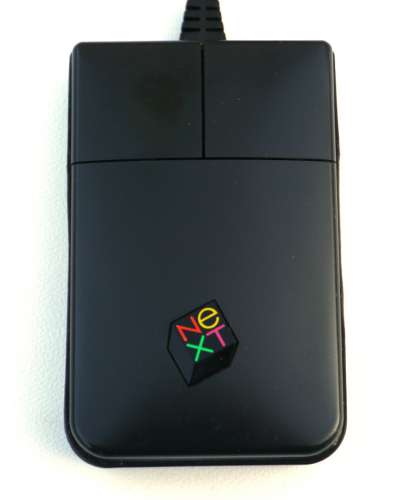
Since the 1988 NeXT Cube computer was expensive, it was not something an everyday buyer could get their hands on. In fact, the selling price was rumored to be twice as high as originally advertised. Most of the geeks of that time were simply not going to be enjoying this machine unless they were enrolled in a college who had purchased one. The laser printer had a price tag of $2000 dollars and the faster hard drive was up to $4000 dollars. This would bring the price of a Cube up above $10,000 dollars. The universities had agreed to buy this machine as a research computer for a lower price. They were not disappointed, but overall, the NeXT Cube was a slow seller with little commercial success. It was taken off the market within a few years.


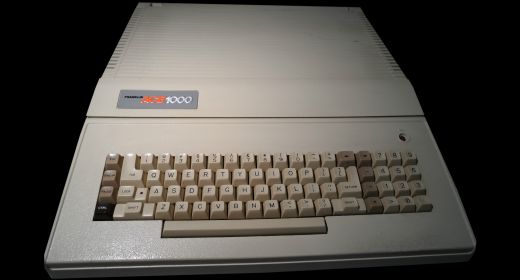
yeahhh.. NeXT Cube..